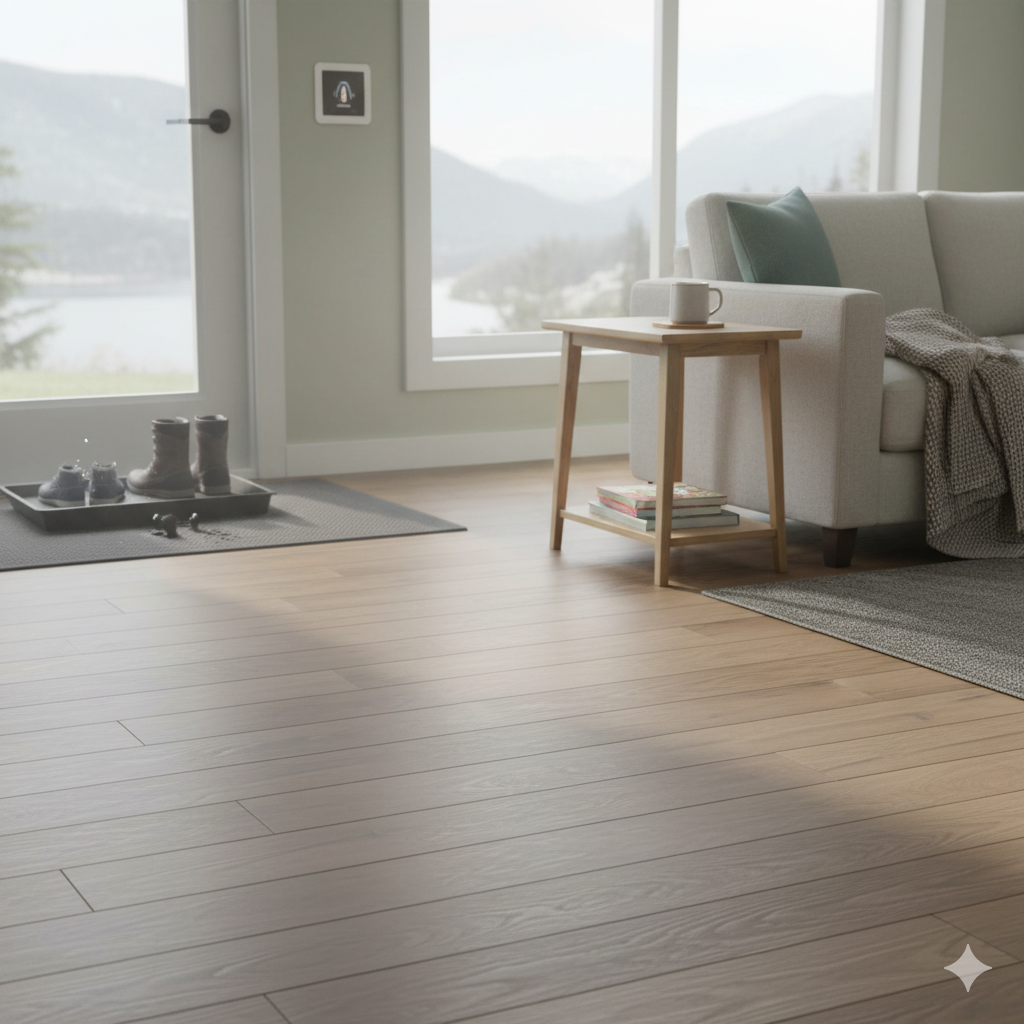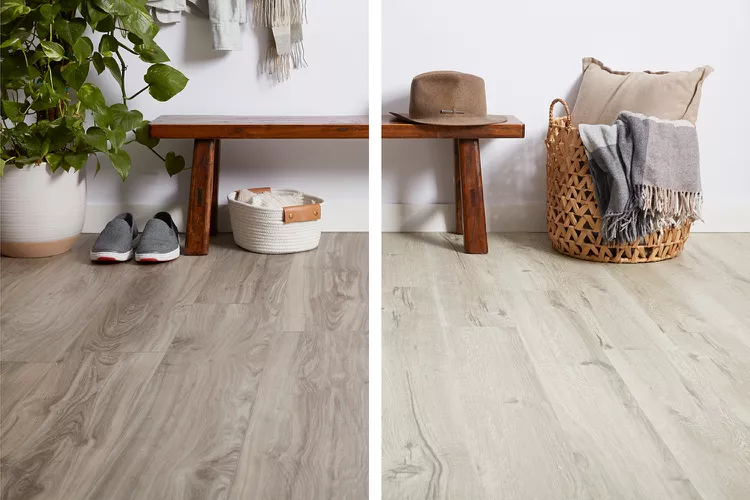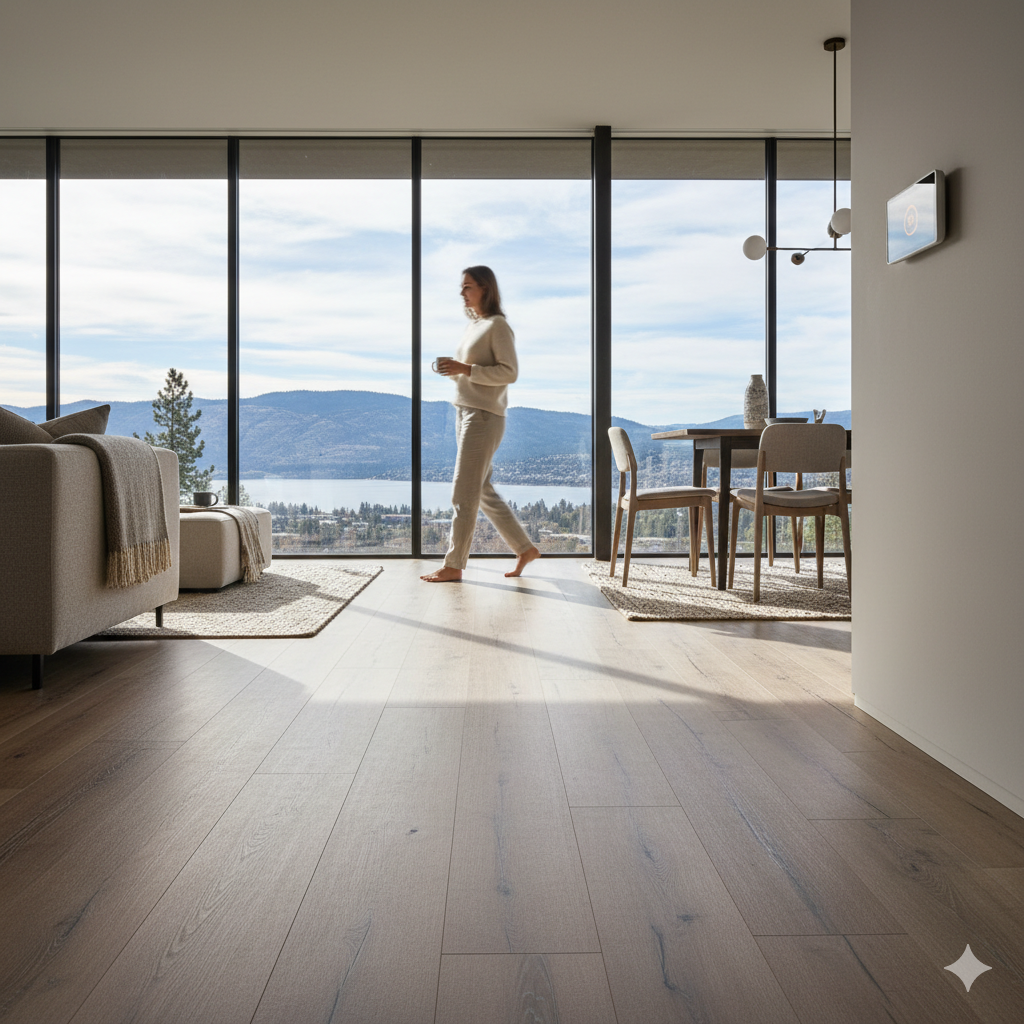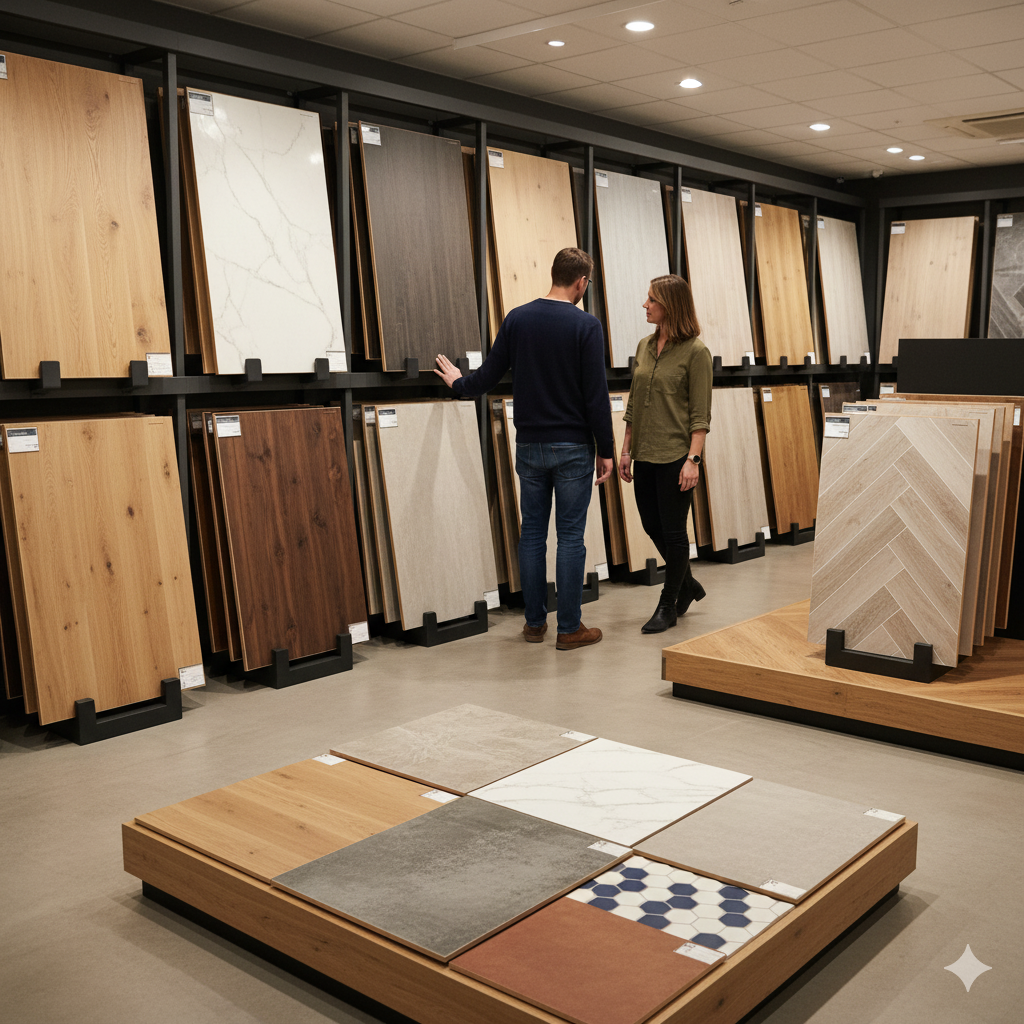 h
hVinyl vs. Laminate in Kelowna: Sunlight, Radiant Heat & Snowy Days
October 20, 2025If you’re choosing vinyl vs laminate flooring for a Kelowna home, office, or rental, the decision shouldn’t hinge on generic pros/cons. Our climate (bright summers, patio-door hotspots), frequent radiant heat, and slushy winter entries all stress floors in different ways. Below is a real-world guide from the Kelowna Floors team: what we see in homes, multi-family builds, and commercial spaces across the Okanagan.
Quick take (for the skim-readers)
Sun & UV: Luxury vinyl (LVP/LVT) handles direct-sun hotspots and temperature swings more predictably; premium laminates with UV protection have improved, but watch fading and panel movement near big south-facing windows.
Radiant heat: Both can work with in-floor systems—follow the manufacturer’s heat limits and underlay rules. Vinyl tolerates gradual temperature shifts well; laminate needs careful expansion planning.
Snowy entries: Meltwater + grit = trouble. Vinyl’s seam resistance and easy damp-mopping give it the edge at doors and mudrooms; laminate needs stricter moisture discipline.

How sunlight actually changes the decision
Patio-door hotspots & big windows amplify UV and surface heat. In those zones:
Vinyl (LVP/LVT)
Better at handling thermal expansion when installed to spec (spacers, perimeter gaps).
Wood-look visuals with emboss-in-register keep patterns realistic even under harsh glare.
Still needs window coverings/rugs at peak hours to reduce heat buildup.
Laminate
Modern wear layers resist fading, but color shift is still more likely in ultra-bright rooms.
Because it’s a wood-based core, expansion/contraction under sustained heat can telegraph as edge peaking if clearances are tight.
Choose lighter, matte tones to hide minor changes and reduce glare.
Radiant heat: what actually matters (beyond the marketing)
Radiant slabs are common in the Okanagan, so get these details right:
Assembly > Material alone. Ask us to match the underlay to your floor and heat system. Some click products require specific underlays or no underlay at all.
Temperature & ramp-up. Most warranties require a gradual warm-up and stable set-points. Sudden spikes stress any floating floor.
Movement planning.
Vinyl: Usually forgiving if perimeter expansion gaps and transition breaks are respected.
Laminate: Needs meticulous expansion space and room-to-room transition strategy, especially across long runs or doorways.
Pro move: Capture room sizes, door counts, and transition locations. We’ll map expansion breaks and trims so your radiant-heat install stays quiet and stable.

Snowy days & wet entries: where the differences show up fast
Kelowna winters bring meltwater, de-icer salts, and grit—a tough combo at front doors and garage entries.
Vinyl wins at water.
Click and glue-down options resist incidental moisture; seams are less fussy when you mop promptly.
Easy to spot-replace damaged planks in high-traffic zones.
Laminate needs more discipline.
Prolonged moisture at seams is the enemy. Use boot trays, mats, and wipe up slush immediately.
Choose water-resistant laminates where possible and avoid installing directly at the exterior threshold.
Entryway package we recommend:
Coarse outdoor mat + absorbent indoor runner
Boot tray or drainable pan
Scheduled grit vacuum + prompt damp mop (neutral cleaner)
Feel, sound & realism (because living with it matters)
Underfoot & sound: Laminate can sound a bit “clicky” in open plans; the right underlay helps, but not all underlays are radiant-heat friendly. Vinyl tends to feel quieter and slightly softer underfoot.
Look & touch: Today’s vinyl and laminate both deliver excellent wood realism. In strong light, lower-gloss finishes and emboss-in-register textures keep patterns believable and hide footprints.
Maintenance & day-2 costs (the budget you actually notice)
Vinyl: Simple damp-mop routine; stands up to snow-day cleanup and households with pets. Spot repairs are straightforward.
Laminate: Easy daily care, but standing moisture risks edge swelling. Keep microfiber mops handy and dry immediately.
Commercial note: For offices and clinics with rolling chairs/carts, ask us about castor-friendly specs and wear-layer choices. Vinyl’s resistance to micro-indentation and seams typically reduces maintenance calls.

When we recommend vinyl vs. laminate (room by room)
Entries & mudrooms: Vinyl (glue-down or robust click)
Kitchens & baths: Vinyl for moisture peace-of-mind
Living rooms & bedrooms: Either, based on look/feel and sunlight exposure
Sunrooms / south-facing great rooms: Vinyl, or high-quality laminate with strict expansion planning and UV management
Suites & rentals: Vinyl for faster turnover cleaning and spot repairs
Commercial corridors & offices: Vinyl (wear layer + rolling-load compatibility)
Key differences: Sun, Heat & Snow at a glance
Sunlight & hotspots — Vinyl: stable; Laminate: heat-sensitive
Radiant heat — Vinyl: compatible; Laminate: plan expansions
Snow/moisture — Vinyl: best; Laminate: caution at seams
Sound/feel — Vinyl: quieter; Laminate: firmer/clickier
Repairs — Vinyl: easy swaps; Laminate: more involved
What we handle (the flooring expert’s job)
Site measure & floor plan
Moisture testing and subfloor assessment
Product specs, underlay, transitions, warranty compliance
Expansion/transition mapping (especially with radiant heat)
Install scheduling and after-care guidance
What helps if you bring it (totally optional)
A few photos of rooms (especially sunny/hotspot areas)
How you use the space (kids, pets, rolling chairs/carts)
Radiant-heat info if you know it (brand/thermostat settings)
Timing constraints (reno dates, business hours, after-hours needs)
Style goals (matte vs. glossy, light vs. dark, tile vs. wood look)
Why it’s useful: those tidbits speed up quoting, prevent change orders, and ensure we pick a floor that fits your sunlight, heat, and winter slush reality. But if you’d rather just show up and point, we’ll do the rest!
Want us to take it off your plate? Book a quick showroom visit and we’ll capture everything on the spot.

Kelowna Floors recommendations (what we’d do in our own homes)
At Kelowna Floors, we usually lead with vinyl in sun-exposed, radiant-heated, or snow-prone areas, then layer in laminate for drier living spaces where the client wants a particular feel or finish. We’ll test your top two contenders under strong showroom lighting, talk through your radiant-heat assembly, and spec an entryway kit so the floor you love on day one still looks great in year five.
Ready to compare side by side?
Visit Our Showroom (hands-on sunlight & slush demo)
Request an Installation Quote (residential or commercial)
Ask About Builder Packages (multi-unit & new construction)
FAQ: Vinyl Versus Laminate
Is vinyl or laminate better for radiant heat?
Both can work with radiant heat if you follow the product’s temperature and underlay rules. In practice, vinyl is more forgiving with gradual heat changes, while laminate needs meticulous expansion gaps and transitions.
Which handles Kelowna’s sunlight better?
Vinyl typically manages direct-sun hotspots and thermal movement more predictably. Premium laminates can perform well too, but plan for UV management (window coverings/rugs) and proper expansion clearance.
What about snowy entries and pets?
Vinyl is the safer bet for meltwater, slush, and pet cleanup. Laminate requires immediate drying at seams and good matting to keep moisture off the floor.
Can I mix products across the house?
Yes. Many Okanagan homes pair vinyl in kitchens/entries with laminate in bedrooms or upper floors. We’ll use transitions that look intentional and maintain movement clearances.
Photos: Margot Cavin for The Spruce + Images AI-generated.
